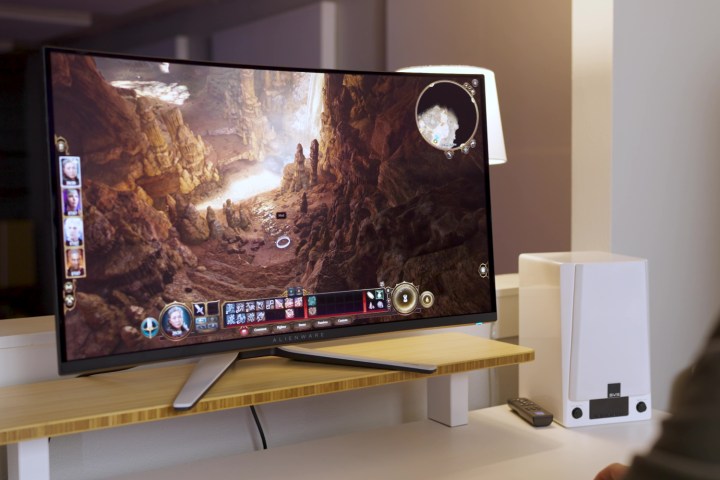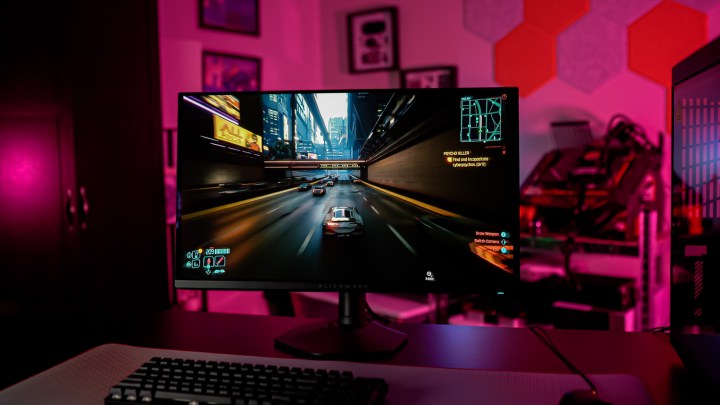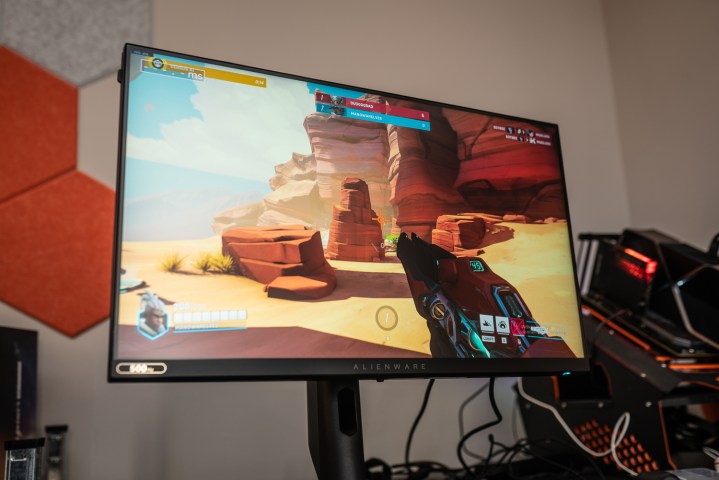
Input lag and response time might sound like very similar metrics, and it’s true they can both impact how your monitor or TV looks and feels, especially when you’re gaming. But they are very different things, and while you ideally want them to be as low as possible for the best gaming experience, there are different thresholds for what’s considered acceptable for each. And if you take your gaming seriously, one is more important than the other.
Here’s how input lag and response time measure up and what you should look for when doing your next monitor upgrade.
What is input lag?

Input lag is the time it takes for an action you perform to appear on your screen. You move the mouse, and almost instantly, the cursor on the screen moves. You type on your keyboard, and the letters appear on-screen a fraction of a second later. The input lag is how long it takes from the press or movement of the human user to it actively displaying on the screen.
In the context of a display, the input lag is only the additional latency added by the display itself, but that’s only one component in the chain of events that make up the complete input lag experienced by PC users, whether they’re gaming or just browsing the internet.
Once the user presses the button or actuates an input of some kind, the process involves:
- The controller or peripheral processes the command and sends an electrical signal to the computer. That can involve processing the signal and sending it down a wire, or sending it wirelessly, which has its own encryption and compression algorithms that can affect the time it takes the signal to reach the receiver. That’s why manufacturers like Razer and Logitech have worked to develop their own transmission technologies to cut down on input lag. On wired devices, they also employ higher polling rates so that the USB connection doesn’t add more than a millisecond or two to the input.
- The console or computer receives the signal and renders the next frame for its graphics card or chip to output. The most commonly targeted frame rate is 60 frames per second (fps), though there are gaming monitors that have high enough refresh rates to handle 120 fps, 240 fps, or even higher. Higher frame rates mean frames are rendered more regularly, and therefore, the next frame to be rendered is much closer to the time the input signal was received, thereby reducing input lag. AMD and Nvidia also have technologies designed to further reduce input lag during competitive play, which can be worth enabling.
- The frame is sent to the display, which is then processed again. This can involve upscaling and motion smoothing, but gaming modes can also turn those additional, delaying technologies off. Overall it’s the pixel response time of the display that has the greatest effect, with technologies like OLED reducing the input lag from the display to practically nothing. Traditional LCDs can still be fast, but their input lag does tend to be slightly higher.
That entire chain encapsulates the idea of input lag, but it’s important to note that when it comes to display specifications — whether it’s a monitor or TV — any reference to input lag is exclusively related to the input lag introduced by the display itself.
Other forms of lag, such as network lag, can cause your games to stutter or disconnect if playing online, but these aren’t considered “input lag,” in the traditional sense.

What is response time?
Response time is a term used in a wide range of computing applications and effectively means when any request is made for service and a response is issued. However, it is most commonly used in the context of display technologies. There, it’s the time it takes for a pixel to change from one color or tone to another. Traditionally, this was measured from black to white pixels, but since that can still be quite a long time (relatively), it’s more often measured in changing from one grey tone to another, which is often far faster.
Displays with long response time, north of 20ms, let’s say, would look fine for use as an office monitor, but in gaming, where there are a lot of fast on-screen elements, you might see what’s known as ghosting. That’s where an on-screen object, character, or projectile moves across the display faster than the pixels can change color to accommodate it, creating a smearing effect behind the moving object.
Compound that effect with many fast-moving objects on screen, and you have a game that doesn’t just look like it has extreme motion blur, but it becomes harder to accurately target your opponents or track what’s going on in the game.
Displays with response times of just a few milliseconds — or even less than 1ms at the extreme end of the scale — don’t exhibit ghosting at all. That can make the display look and feel more responsive.
Is input lag or response time more important for gaming?
It arguably depends on the type of game you’re playing and how competitive you are, but you don’t want egregious forms of either for any gaming experience. A high input lag will make a game feel sluggish and unresponsive and will tank your competitive capabilities, and a high response time will make your games look blurry and lack clarity.
For general gaming, a grey-to-grey response time of 5ms or less is perfectly fine, but if you want the ideal experience and pixel-perfect accuracy, then a 1ms or less response time is ideal. Input lag for general play should be less than 16ms on a 60Hz monitor or TV — make sure to turn on game mode if you find it going higher than that.
For competitive gaming, you really want a high refresh rate monitor, as those can exhibit far lower input lags. At a 240Hz or higher refresh rate, you should be getting a display input lag as low as just 1-3ms. That will make it possible for you to react faster in-game, which can sometimes be the difference between winning and losing.
What are the best gaming monitors for input lag?
The fastest gaming monitors with the lowest input lag tend to be the gaming monitors with the highest refresh rate, but that’s not always the case. The best gaming monitors are some of the fastest you’ll find but don’t sleep on the latest 2024 releases, either. We love the latest Alienware QD-OLED displays for gaming, and they offer some of the lowest input lags, too.
Editors’ Recommendations
Services Marketplace – Listings, Bookings & Reviews
